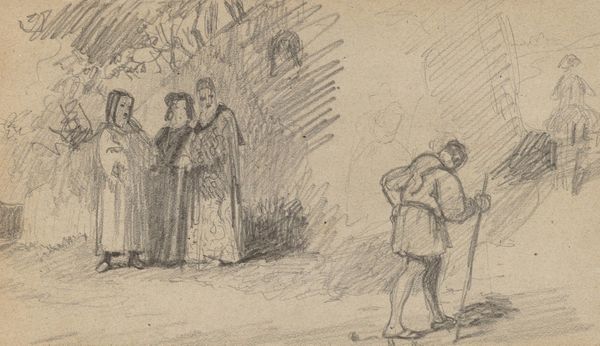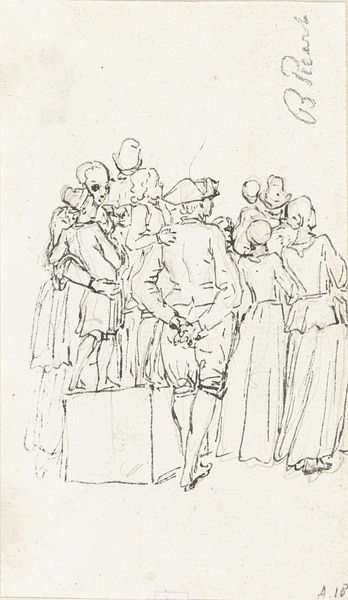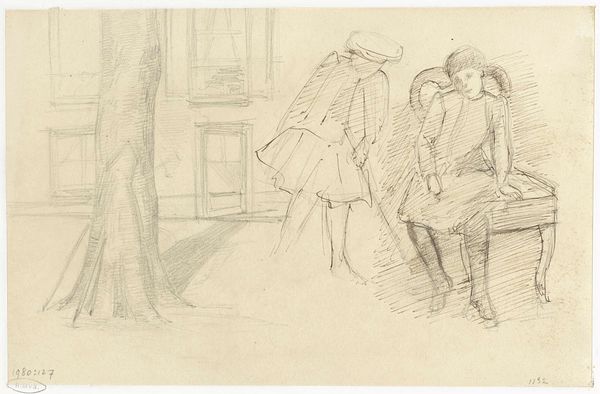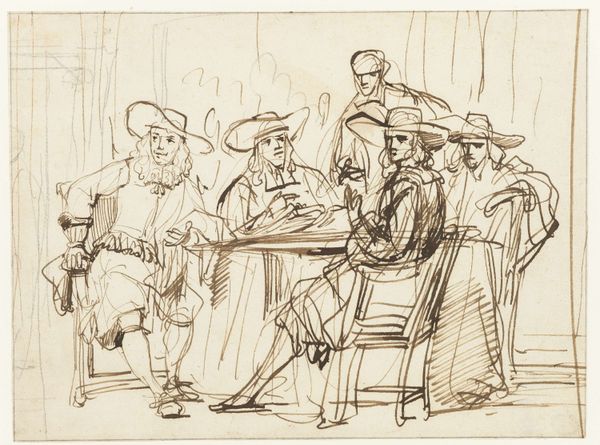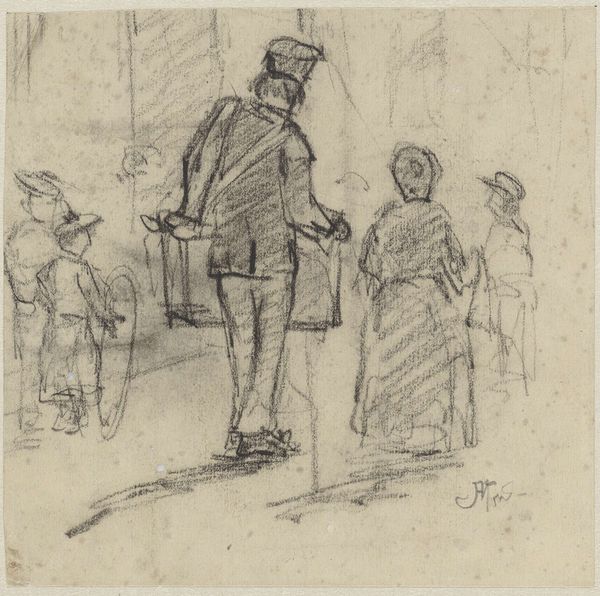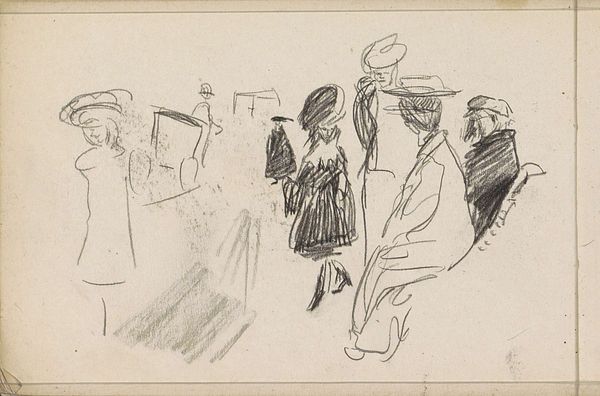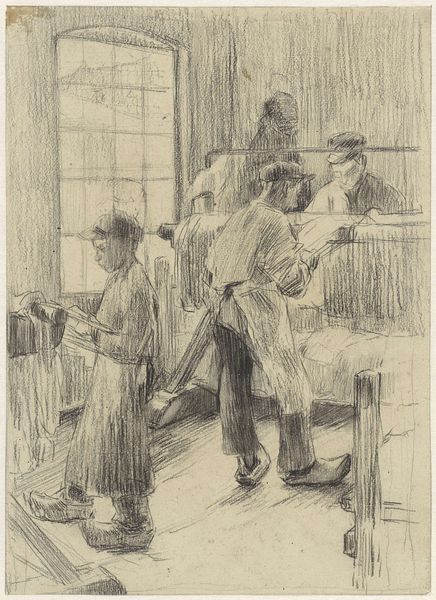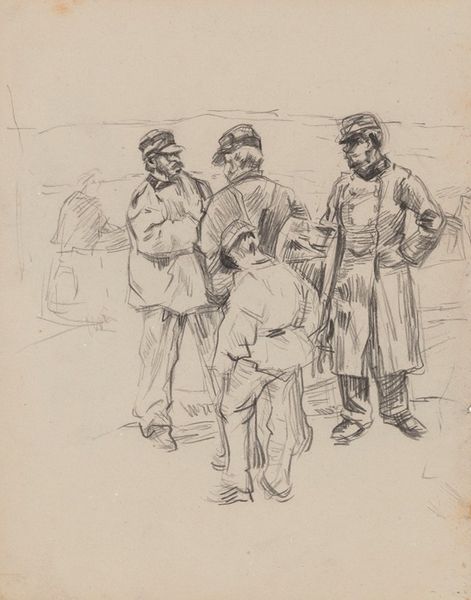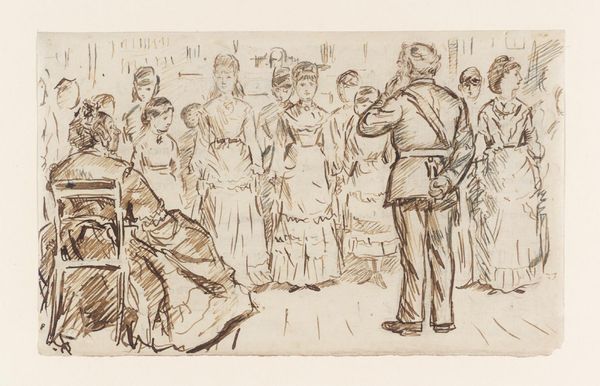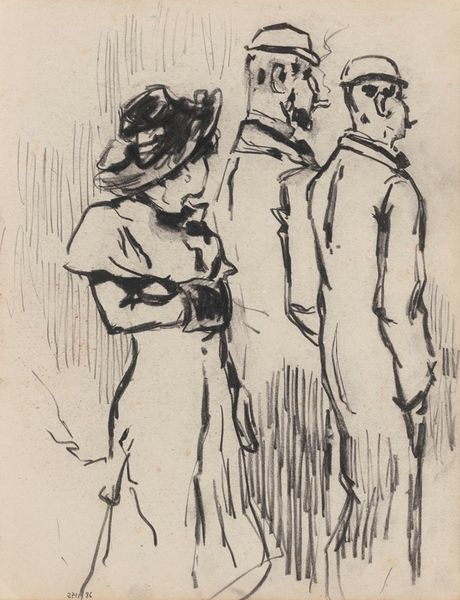
Copyright: Public Domain: Artvee
Curator: Jean-Louis Forain's drawing, "Les Notables," created around 1914-1919, depicts a group of figures with both pencil and charcoal. What strikes you first? Editor: A heavy sadness. The muted tones, the figures shrouded in dark clothing... there's an undeniable weight of grief here. Is it about the war, then? Curator: It certainly could be. Forain, although known for satirical commentary, frequently worked as a pro-war propagandist during the First World War, depicting scenes from the front and life behind the lines. Here, we see a stark contrast between the 'notables' seemingly immune to war and those directly experiencing trauma. The application of the charcoal and pencil is interesting, look at how quickly he worked! Editor: I am intrigued by this loose definition of 'notables.' Who were they in this moment in the making? It suggests to me a class divide during wartime, the disconnect between those who govern and those who serve, but it is hard to pin down from the aesthetic, right? Curator: The quick strokes really contribute to that, yes. He’s less interested in delineating specific details than capturing a feeling, a sense of unease, maybe the feeling of walking by these people as a serviceman or woman at that time. It blurs lines between different kinds of labour at the time, in an industrial sense and in the context of societal responsibilities. Editor: Absolutely, and it speaks to anxieties of its time, that many are still having today. The anonymity of these figures amplifies their universal sorrow—I'd wager that many looking at this today still know this feeling, which can invite important conversations, even beyond a material reading of wartime labour and production. Curator: Definitely. This interplay between the personal and political gives his pro-war propaganda another kind of layer that perhaps does more than just "pro war", and might give space for pause. Editor: Yes, that subtle blend challenges simplistic readings and invites reflection on who shapes our perspectives on power and grief. It’s an artwork, as you've said, that continues speaking to both past and present struggles.
Comments
No comments
Be the first to comment and join the conversation on the ultimate creative platform.
